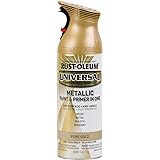Master Your Home: Unlocking 15 Expert Cleaning Hacks for a Pristine Space
Are you tired of cleaning consuming your precious time and budget, often with results that fall short of expectations? The endless cycle of scrubbing, spraying, and replacing expensive cleaning products can feel like a losing battle. However, there’s a smarter way to maintain a spotless home without the usual hassle or chemical overload. By embracing ingenious approaches to common household challenges, you can revolutionize your cleaning routine.
The video above offers a fantastic visual walkthrough of 15 amazing cleaning hacks designed to simplify your life. Complementing that visual guide, this comprehensive article delves deeper into each technique, providing the “why” behind the “how,” along with expert insights and practical advice. These 15 amazing cleaning hacks are designed to empower you with efficient, cost-effective, and often chemical-free solutions for every corner of your home.
Elevating Your Bathroom Routine: Beyond Basic Cleaning
The bathroom, a sanctuary for many, often becomes a battleground for grime and humidity. Fogged mirrors and streaky windows are common grievances, yet with the right approach, these issues can become a distant memory.
The Anti-Fog Mirror Prophylactic: Shaving Cream Efficacy
Few things are as frustrating as stepping out of a steamy shower only to find your mirror completely obscured by condensation. This common issue, a direct result of temperature differences between the glass surface and humid air, can be easily remedied with an unexpected household item: shaving cream. This isn’t merely a temporary fix; it’s a clever application of surface chemistry.
Shaving cream contains surfactants and oils that, when applied and buffed away, leave behind an imperceptible, microscopic film. This film prevents water molecules from adhering to the mirror surface and forming tiny droplets, which are what cause the fog. Instead, the water disperses evenly, allowing for a clear reflection. Imagine you’re preparing for an important meeting, and instead of impatiently wiping a fogged mirror, you have an instantly clear view, saving you precious minutes.
For optimal results, apply a thin, even layer of shaving cream across the entire mirror surface. Allow it to sit for a moment, then wipe it clean with a piece of newspaper or a lint-free cloth. The newspaper, surprisingly effective, helps buff the surface to a streak-free sheen without depositing fibers. Beyond bathroom mirrors, this hack extends its utility to car windows and rearview mirrors, offering a prophylactic measure against fogging on chilly mornings.
Streak-Free Sanctuary: The Newspaper and Coffee Filter Advantage
Achieving truly streak-free windows and mirrors can be an elusive goal when relying on conventional paper towels or cloths, which often leave behind lint or residue. Conversely, professional cleaners often turn to specific tools for a reason, and you can mimic their success using readily available items: newspaper and coffee filters.
The finely woven fibers of newspaper, particularly the un-inked sections, and the dense, lint-free material of coffee filters are superior for glass cleaning. They absorb cleaning solutions effectively without shedding fibers, ensuring a crystalline finish. This method is particularly effective when preceded by the shaving cream hack, as it primes the surface for a truly impeccable gleam. The key is to avoid circular motions; instead, use long, overlapping strokes for a uniform polish.
Reclaiming Your Kitchen: From Messy Meals to Pristine Pans
The kitchen, often the heart of the home, can quickly become a hub of stubborn stains and endless scrubbing. From baked-on food to splattered microwaves, these challenges demand smart solutions that conserve both time and effort.
Parchment Paper as a Culinary Barrier: The No-Mess Cook
While parchment paper is a staple for baking, its utility extends far beyond lining cookie sheets. Its non-stick, heat-resistant properties make it an exceptional barrier for stovetop cooking, especially for dishes prone to sticking or leaving a mess. Imagine a quick breakfast where eggs slide effortlessly from the pan, leaving no residue behind, allowing you to return the pan to its place without washing.
This hack is particularly beneficial for delicate foods like eggs, pancakes, or even quesadillas. By placing a sheet of parchment paper in your skillet before cooking, you create a disposable, non-stick surface that eliminates the need for excessive oil and subsequent strenuous cleaning. The parchment paper acts as a physical barrier, preventing moisture and food particles from adhering to your cookware, thus preserving your pans and your patience.
The Boiling Water Blitz: Conquering Dried-On Dishes
A sink full of dishes with dried-on, caked-on food can turn the prospect of manual washing into a daunting chore. Instead of resorting to aggressive scrubbing, which can damage delicate cookware and waste considerable effort, leverage the power of thermodynamics. Boiling water is a simple, yet profoundly effective, pre-soaking agent.
Pouring a pot of freshly boiled water over a stack of dirty dishes in the sink works wonders. The intense heat and steam quickly rehydrate and loosen dried food particles, significantly reducing the “elbow grease” required for cleaning. This method is particularly advantageous for busy families; you can have a pot of water heating while you dine, then pour it over the dishes as soon as the meal is finished. The residual heat will continue to work its magic, transforming what would be a laborious task into a breezy rinse and wipe. This can make manual dishwashing a hundred, if not five hundred, times easier.
DIY Dishwashing Pods: A Frugal and Effective Alternative
The convenience of dishwashing pods is undeniable, but their escalating cost can make them an unsustainable option for many households. The good news is that you can concoct your own highly effective, cost-efficient dishwashing pods using basic household ingredients. This hack not only saves money but also gives you control over the chemicals used in your kitchen.
A simple combination of a couple tablespoons of baking soda and a few drops of liquid dish soap (like Dawn) can be molded into a custom pod. The efficacy of baking soda lies in its natural abrasive and deodorizing properties, coupled with its ability to neutralize acidity and counteract the excessive foam often produced by liquid dish soap in a dishwasher. The baking soda acts as a foam suppressant and a mild abrasive, while the dish soap provides the degreasing power. These homemade pods cost virtually nothing to make and can be prepared in advance, stored, and used as needed, ensuring a continuous supply of sparkling clean dishes without the premium price tag.
The Mighty Microwave Makeover: Steam Power for Splatters
The microwave, a kitchen workhorse, frequently bears the brunt of splattered food, resulting in stubborn, baked-on grime. While many resort to harsh chemical cleaners or abrasive scrubbing, a simple, eco-friendly solution harnesses the power of steam. This method is not only effective but also avoids potentially damaging internal components with excessive chemicals.
Place a bowl of plain water inside the microwave and heat it on high for 5 to 10 minutes, depending on the severity of the mess and your microwave’s wattage. The water will boil, generating steam that condenses on the interior surfaces, softening the dried food particles. Once the timer is up, allow the bowl to sit for a few minutes with the door closed, letting the steam continue its work. Then, simply wipe away the loosened grime with a paper towel or sponge. You’ll find that stains effortlessly lift, requiring minimal effort and leaving behind a gleaming, odor-free interior. There’s no need for lemon or other additives; pure water steam is often sufficient.
Whole-Home Wellness: Innovative Approaches to Daily Chores
Beyond the kitchen and bathroom, everyday spaces present their own set of cleaning challenges. From dusty carpets to grimy vents, a smarter strategy can transform tedious chores into manageable tasks.
Carpet Deodorizer Alchemy: Baking Soda and Essential Scents
Commercial carpet deodorizers can be an unnecessary expense, especially when a highly effective and natural alternative is available in your pantry. Baking soda is a renowned natural deodorizer, capable of absorbing odors rather than just masking them. By combining it with your favorite essential oil or room spray, you can create a custom, potent carpet freshener.
A simple mixture of baking soda and a few spritzes of lavender spray, housed in a Mason jar with a shaker lid (a repurposed Parmesan cheese container top works perfectly), becomes an excellent dispensing tool. Sprinkle the mixture liberally over your carpets, allow it to sit for 15-30 minutes to absorb odors, then vacuum thoroughly. This method not only neutralizes odors but also leaves your home smelling fresh and clean, without the artificial chemical scent often associated with store-bought products. It focuses on sucking up dirt, not money from your wallet.
Proactive Trash Management: The Layered Bag Approach
Taking out the trash might seem like the simplest chore, but the act of replacing the bag can often lead to a moment of procrastination. Why not streamline this process? The layered trash bag hack is a testament to the power of proactive organization, making future trash duties effortlessly efficient.
Instead of placing a single trash bag into the bin, layer several bags one after another. When one bag is full and removed, another is already waiting, perfectly fitted and ready for use. This simple act eliminates the minor inconvenience of fetching a new bag from the cabinet, saving precious seconds and reducing mental friction. Imagine a busy weeknight where emptying the trash no longer interrupts your flow; it’s a seamless transition that embodies smart home management.
Aluminum Foil Scour Power: Tackling Baked-On Residue
For those instances where parchment paper wasn’t used, or you’re dealing with particularly stubborn baked-on food on bakeware, a simple ball of aluminum foil can act as a surprisingly effective, non-scratch abrasive. This hack is a practical alternative to steel wool, especially for occasional use, and can be fashioned instantly from materials already in your kitchen.
Crumple a piece of aluminum foil into a tight ball. The crinkled edges provide an abrasive surface that, when combined with dish soap and water, can dislodge tough, baked-on food particles without excessively scratching sturdy bakeware like glass or metal baking dishes. While it’s always easier to prevent sticking, this trick comes in handy for deep cleaning. Always test on an inconspicuous area first, especially on non-stick coatings, though it’s generally best for robust, uncoated pans.
The Wet Sock Advantage: Superior Blind Dusting Technique
Microfiber dusters, while popular, often merely redistribute dust rather than effectively capturing it, especially on intricate surfaces like window blinds. The solution? An old sock, slightly dampened. This low-tech method offers superior dust removal and ensures that grime is trapped, not just moved around.
Slip an old sock onto your hand, dampen it slightly with water or a mild cleaning solution, and run it over each individual blind slat. The damp fabric effectively grabs and holds onto dust, dirt, and pet hair, preventing it from recirculating into the air. The tactile nature of the sock allows for a more thorough, encompassing clean, molding to the contours of the blinds for comprehensive removal. The dirt stays on the sock, not scattered throughout your house, ensuring a truly cleaner environment.
Blender Self-Care: The Hot Soapy Water Method
Blenders are fantastic for quick smoothies and sauces, but their intricate design often makes cleaning a dreaded chore, leading many to avoid using them altogether. Disassembling and scrubbing a bulky blender pitcher is cumbersome, particularly when dealing with dried-on residues. Fortunately, many modern blenders possess an ingenious self-cleaning function, or can be effectively cleaned with a simple hot soapy water method.
Immediately after use, fill the blender pitcher with warm, soapy water and run it on its highest setting for about 30 seconds. The agitation of the blades, combined with the hot water and soap, creates a powerful vortex that cleans the interior thoroughly. For blenders with a dedicated self-cleaning cycle, simply follow the manufacturer’s instructions. This simple ritual transforms blender cleaning from a dreaded task into a seamless part of your culinary process, making you more likely to enjoy your blender’s full utility.
DIY All-Purpose Cleaner: Vinegar & Orange Peel Infusion
The allure of an all-purpose cleaner that is effective, natural, and free from harsh chemicals is strong. White vinegar is a potent natural disinfectant and degreaser, but its pungent odor can be off-putting. However, infusing it with orange peels creates a delightful citrus-scented cleaner that retains all of vinegar’s power without the strong smell.
Simply fill a Mason jar with orange peels and top it off with white vinegar. Allow this mixture to steep for a couple of weeks. During this maceration process, the orange peels release limonene and other natural oils, which not only mask the vinegar’s scent but also contribute to the cleaning solution’s degreasing properties. The result is a versatile, chemical-free cleaner that can be used on countertops, bathroom fixtures, and various surfaces throughout the house. This solution sanitizes, disinfects, and leaves a pleasant, natural aroma, offering peace of mind about the products you use in your living spaces.
Custom Cleaning Wipes: Maximizing Efficiency and Economy
Store-bought cleaning wipes are convenient but expensive and often laden with chemicals. Creating your own custom cleaning wipes is a remarkably cost-effective and environmentally conscious alternative, allowing you to control the cleaning solution and ensure a continuous supply. Imagine having a continuous supply of custom-scented, chemical-free cleaning wipes, ready to tackle any spill.
Start with a high-quality roll of paper towels, cut in half to fit your container (a recycled plastic container with a tight-fitting lid is ideal). The quality of the paper towel is crucial to prevent tearing during use. Prepare your preferred cleaning solution—be it your homemade vinegar and orange peel infusion, a diluted bleach solution, or another concoction. Pour just enough solution over the paper towel roll to saturate it completely, ensuring no standing water remains. Remove the cardboard tube from the center, thread the innermost wipe through a small “X” cut into the lid, and you have instant, custom-made cleaning wipes. These are incredibly useful for quick clean-ups in the kitchen, bathroom, or any high-traffic area, offering both efficacy and economy.
Foaming Dish Soap Ingenuity: Dilution for Longevity
Foaming dish soap dispensers are a popular household item, offering a rich lather with less product. However, purchasing pre-filled foaming soap can be surprisingly expensive, as you’re often paying for diluted product and excess packaging. A simple hack allows you to transform any concentrated dish soap into a luxurious foam, extending its life and saving you money.
Simply save your empty foaming soap dispenser. Add a few drops of your favorite concentrated dish soap to the bottom, then fill the rest of the container with water. Swirl gently to combine, and you’ll have a continuous supply of foaming dish soap. The dispenser’s pump mechanism aerates the diluted soap, creating a satisfying foam that cleans effectively while using significantly less product. This not only stretches your budget but also reduces plastic waste by encouraging container reuse, making it an eco-friendly choice for sustainable household management.
The Slime Sanitizer: Dusting Nooks and Crannies
Slime, a popular toy for children and adults, possesses unique viscoelastic properties that make it an unexpectedly brilliant cleaning tool for hard-to-reach areas. Its malleable, adhesive nature allows it to conform to intricate surfaces, picking up dust, crumbs, and even oils without leaving any residue or moisture. It’s an ingenious application of a popular toy, transforming it into a highly effective, tactile cleaning tool.
To make cleaning slime, combine a 4 oz bottle of glue with a generous amount of shaving cream (this helps it double or triple in size and improves consistency), then gradually add liquid starch or laundry detergent until the mixture coagulates and no longer sticks to the bowl. This resulting goo is perfect for cleaning air vents, baseboards, refrigerator vents, and even electronic devices like keyboards and laptops. It molds into tight spaces, lifting dust and oils from crevices that traditional cloths or brushes struggle to reach. The dry adherence of slime means there’s no risk of moisture damaging sensitive electronics, making it an ideal choice for safely sanitizing your tech while providing a fun and engaging way to tackle dirt—even encouraging kids to participate in household chores.
By integrating these ingenious cleaning hacks into your daily regimen, you’re not just cleaning; you’re optimizing your living environment for efficiency, economy, and a healthier lifestyle. Embrace these smart solutions to transform your home into a consistently pristine space with minimal effort.







